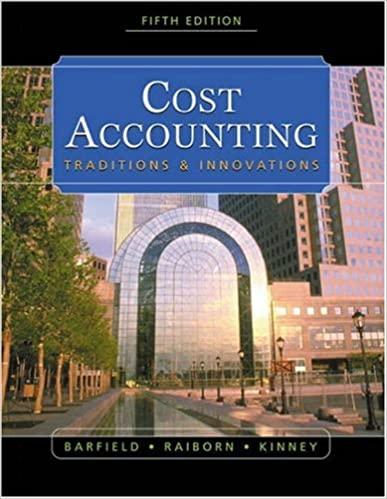26. (Cost allocation using cost drivers) Peterson Wholesale has an in-house legal department whose activities fall into
Question:
26. (Cost allocation using cost drivers) Peterson Wholesale has an in-house legal department whose activities fall into one of three major categories. Recently, operating costs in the department have risen dramatically. Management has decided to implement an activity-based costing system to help control costs and charge in-house users for the legal services provided. The principal expense in the legal department is professional salaries, and the estimated cost of professional salaries associated with each activity follow:
Reviewing supplier or customer contracts (Contracts) $400,000 Reviewing regulatory compliance issues (Regulation) 250,000 Court actions (Court) 350,000 Management has determined that the appropriate cost allocation base for Contracts is the number of pages in the contract reviewed; for Regulation, the allocation base is the number of reviews; and for Court, the allocation base is professional hours. For 2001, the legal department reviewed 20,000 pages of contracts, responded to 500 regulatory review requests, and logged 3,000 professional hours in court.
a. Determine the allocation rate for each activity in the legal department.
b. What amount would be charged to a producing department that had 1,000 pages of contracts reviewed, made 15 regulatory review requests, and consumed 250 professional hours in court services during the year?
c. How can the developed rates be used for evaluating output relative to cost incurred in the legal department? What alternative does the firm have to maintaining an internal legal department and how might this choice affect costs?
Step by Step Answer:

Cost Accounting Traditions And Innovations
ISBN: 9780324180909
5th Edition
Authors: Jesse T. Barfield, Cecily A. Raiborn, Michael R. Kinney





